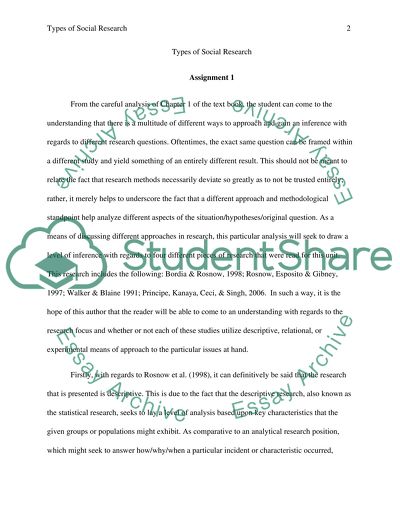Types of Social Research Coursework Example | Topics and Well Written Essays - 750 words. Retrieved from https://studentshare.org/human-resources/1479778-types-of-social-research
Types of Social Research Coursework Example | Topics and Well Written Essays - 750 Words. https://studentshare.org/human-resources/1479778-types-of-social-research.


